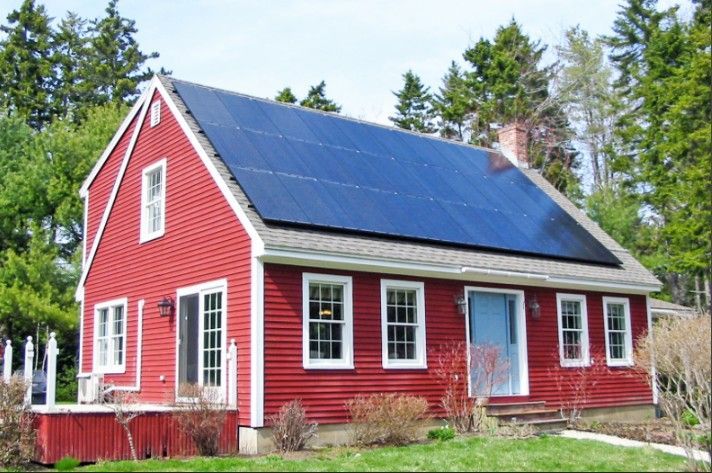Abbotsford Solar Installation
Top-Rated Solar Panel Companies on Retrofitting Older Homes
Did you know that top-rated solar panel companies are helping more older homes switch to green power?
Houses built before the 1980s have outdated roofs, old wiring, or less energy-efficient designs. These issues can make retrofitting them for sunlight-based modules tricky.
Expert companies have the tools, experience, and knowledge to handle these challenges and guarantee your place gets the most out of sunlight power.
Let's explore why retrofitting classic houses can be complex, how companies can help, and what you need to know before making the switch.
Key Takeaways:
- More aged residences may need roof reinforcements, electrical upgrades, and better insulation.
- Experts guarantee safe installation by assessing your home's needs and using the best tech for classic properties.
- The process involves a residence assessment, custom design, installation, and testing to secure efficiency and code compliance.
What is Retrofitting?
Retrofitting is upgrading an existing building or system to improve performance, efficiency, or safety. This could mean adding insulation, updating windows, or strengthening a home's roof. Upgrading for renewable energy involves reinforcing roofs or upgrading electrical systems to support a solar panel system.
Why Upgrading Older Properties Can Be Tricky
Retrofitting an aged dwelling with modules sounds great but comes with challenges. These houses can't handle modern energy systems, so you'll need to make some changes to make green energy work.
1. Structural Issues
Older dwellings can't handle the weight of modern solar installation. For example, homes from the 1950s and 1960s in Canada commonly have steep roofs made with wood shingles that might need replacing. To secure the roof to support the modules, you may need to reinforce or replace it with stronger materials, like metal or asphalt.
The Canadian Green Building Council (CaGBC) recommends checking the roof's condition before installing a solar system. If it cannot support the weight of the modules, it might need some work to stay stable in the long term.
2. Electrical System Limitations
Many aged residences have outdated systems not designed with green energy in mind. Older fuse boxes or circuit breakers might be unable to handle an installation. According to the Canadian Solar Industries Association (CanSIA), homes built before 1980 need upgrades to support modules safely.
Aged houses might also not be able to handle current storage devices like batteries, which are common today. Without these devices, it can be harder to use green power when the sun isn't shining.
What Makes a Breaker Box Green Energy-Ready?
A breaker box distributes current from the main source to the various circuits in your dwelling.
Incoming electricity enters circuits via breakers. For instance, your kitchen may have its own circuit with a 20-amp or 30-amp breaker. If that circuit experiences a short or overload, the breaker will trip, cutting power to just that circuit while the rest remains unaffected. This safety feature helps prevent electrocution and fires.
Each circuit has its own breaker, and a main breaker controls them all. This main breaker is rated for your home's total amperage capacity.
Most need a main breaker rated for at least 200 amps. Those rated below 200 amps may struggle to carry the additional load from the sun. Overloading can lead to fires or other hazards.
3. Energy Efficiency Concerns
Classic dwellings are less energy-efficient, with poor insulation and single-pane windows. Energy Efficiency Canada found that 35% of homes built before 1980 have bad insulation, which causes heat to escape or enter easily.
- Homes built in the early 20th century use more power on average than homes built after 1946. Modern construction practices include energy-efficient features like better insulation.
According to Energy Statistics Canada, properties built after 1996 are larger than more aged dwellings, while houses from the post-WWII era were the smallest.
Why Top-Rated Companies Are Important
Adding a panel to a classic residence takes experience, tools, and a solid understanding of building codes. That's why working with installers makes all the difference. They know how to handle the challenges of retrofitting and make the process much easier for you.
Know Older Properties Inside and Out
They'll assess your roof to determine whether it needs reinforcing or check whether your electrical circuit can handle the setup. Instead of one-size-fits-all solar energy solutions, they offer fixes tailored to your home so everything works smoothly.
- Roof: The installer will consider it provided the inspection confirms it's structurally sound, free of major damage or wear, and has a substantial lifespan left. If it's not fit for installation, the good news is that you don't always need to install it in your main house. Structures like sheds or carports can be suitable alternatives, especially if they have newer roofs.
- Electrical Systems: Expert installer may recommend upgrading your existing switchboard to efficiently handle surplus current generated. This certifies you can fully harness the benefits of the sun without overloading your panel.
Use the Best Tech for the Job
The best companies use advanced tech to make retrofits efficient. For example, lightweight modules work great on older roofs, and smart battery systems let you store power for later. This means you can get the most out of your sunlight-based system, even if your house has worn-out infrastructure.
Handle the Permits and Paperwork
Handling building codes and permits can be a headache, but top-rated businesses make sure your installation follows local rules so you don't have to stress over regulations or red tape.
What to Look for in PV Systems Company
Choosing the right company is important for retrofitting an older dwelling with green energy.
- Checking Viability of Old Houses Experience. Not all businesses specialize in classic homes. Look for companies with experience in retrofitting. They must have a portfolio of projects involving older roofs or unique layouts. Testimonials from customers can also give you confidence.
- Engineering and Design Services. Choose a company that provides structural assessments to guarantee your roof can handle the installation. They must also offer custom designs.
- High-Quality Panels and Equipment. Lightweight versions are ideal for aging roofs that can't bear much extra weight. Look for durable options with long warranties, and make sure the company offers modern inverters and batteries that work well with your electrical systems.
What to Expect When Upgrading Your Home to a Sustainable Option
Adding modules to an old residence is much simpler when you know what's involved. Here's a quick guide to help you understand the process:
Step 1: Home Assessment
They'll check your roof, electrical line, and power use since time-worn residences require attention to issues such as outdated wiring or a weak roof.
Step 2: Custom Design
After the inspection, the company creates a plan. For example, they might use light modules for an aging roof or design the system to work with your existing electrical setup.
Step 3: Installation and Upgrades
They install and handle any upgrades. They'll make sure everything is safe, compliant, and set up for maximum solar panel efficiency. In Canada, meeting building codes is important if you want to qualify for government rebates or programs like Net Metering.
Step 4: Testing and Activation
Once installed, the team tests your solar energy system. They'll make sure everything runs smoothly, from power generation to integration with your home's electrical unit. Once the testing is complete, they'll activate your setup, and you're good to go.

Consider the Top-Rated Solar Panel Companies Even If You Have an Old Dwelling
Choosing a top-rated company is key when modifying an older home with sunlight-based modules. These businesses have the expertise to handle classic homes' unique challenges, such as outdated wiring, weaker roofs, or less efficient systems.
Experts like Abbotsford Solar Installation will guide you to the best solar solution, whether comparing solar panels, figuring out how many solar panels you need, or choosing the best solar panel brand. With proper solar panels installed, you'll maximize savings and efficiency.
Frequently Asked Questions
What are the financing options for modifying my home with a sunlight-based module?
Here are several financing options for upgrading your dwelling with modules:
- Government Grants & Incentives – Programs like the Canada Greener Homes Grant can cover up to $5,000 for energy-efficient upgrades.
- Loans – Low-interest loans from financial institutions, including options through the Canada Mortgage and Housing Corporation (CMHC).
- Power Purchase Agreements (PPAs) – A third-party installs the system, and you pay for the power it produces with no upfront cost.
- Leasing – Lease modules with a fixed monthly fee, though you miss out on incentives.
- Home Equity Loans – Use home's equity to secure a loan at lower rates.
- Personal Loans – Unsecured loans with fixed rates, though higher than home equity options.
- PACE Financing – Repay your solar panel installation through property tax assessments in certain areas.
What's the best time of year to retrofit my classic home with sunlight-based collectors?
Spring or fall is the best time to retrofit your home with most solar panels. These seasons offer milder weather and are less busy for companies. Installing solar panels before winter arrives guarantees the process is complete before snow delays work. For long-term durability and efficiency, consider monocrystalline panels for your retrofitting project.
What is net metering, and can I use it with my classic home's PV systems?
Net metering is a system that permits homeowners to send excess current back to the grid. In return, you get credits on your electricity bill. You can send the surplus to the grid when you produce more than you need. In return, you earn credits that you can use later, such as at night or during cloudy days.
Yes, you can use net metering if your home's system is compatible and up to code.
Go Solar. You get Clean, Safe, and Renewable Energy.

CONTACT US
36092B Regal Pkwy, Abbotsford, BC
V3G 1L1, Canada
USEFUL LINKS
Book a Service
We will get back to you as soon as possible.
Please try again later.
All Rights Reserved | Abbotsford Solar Installation |